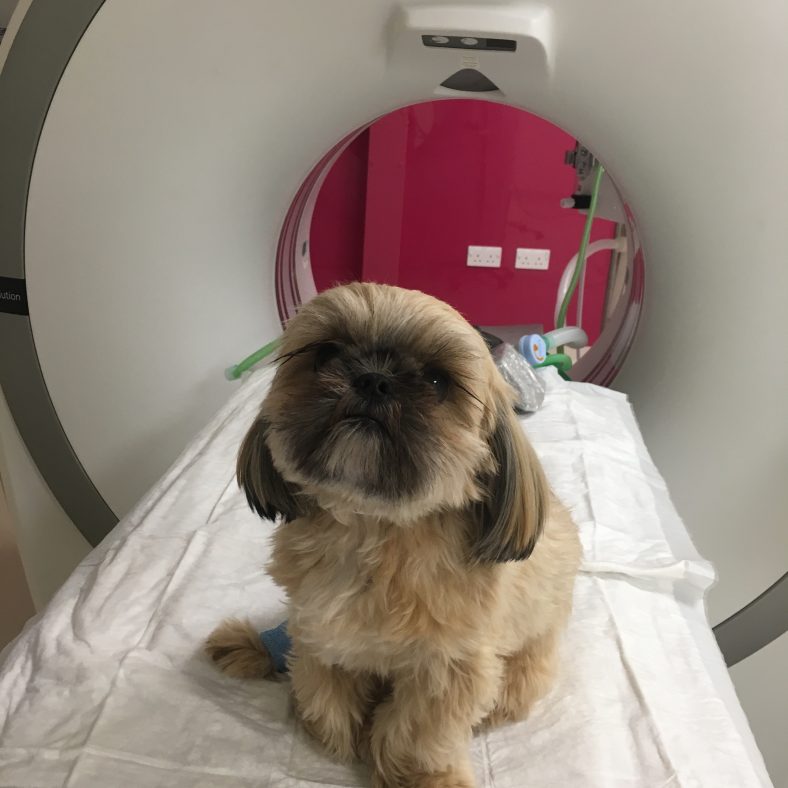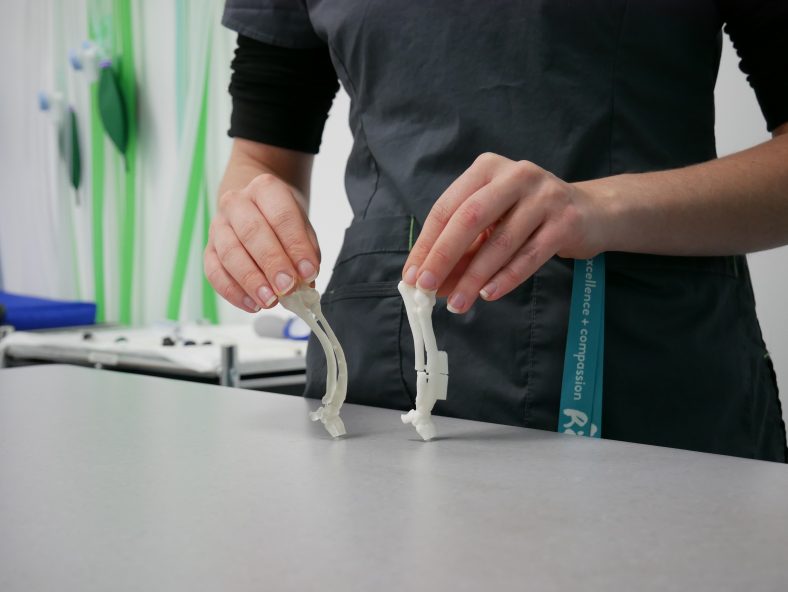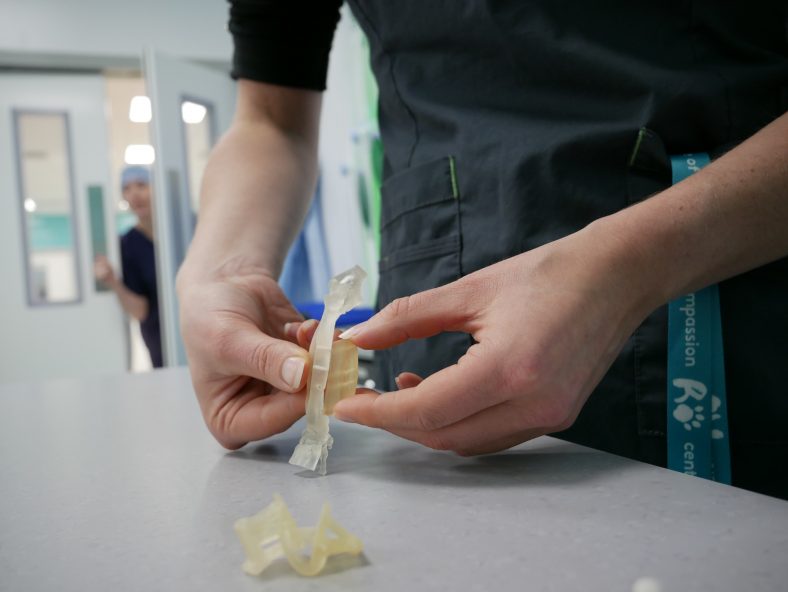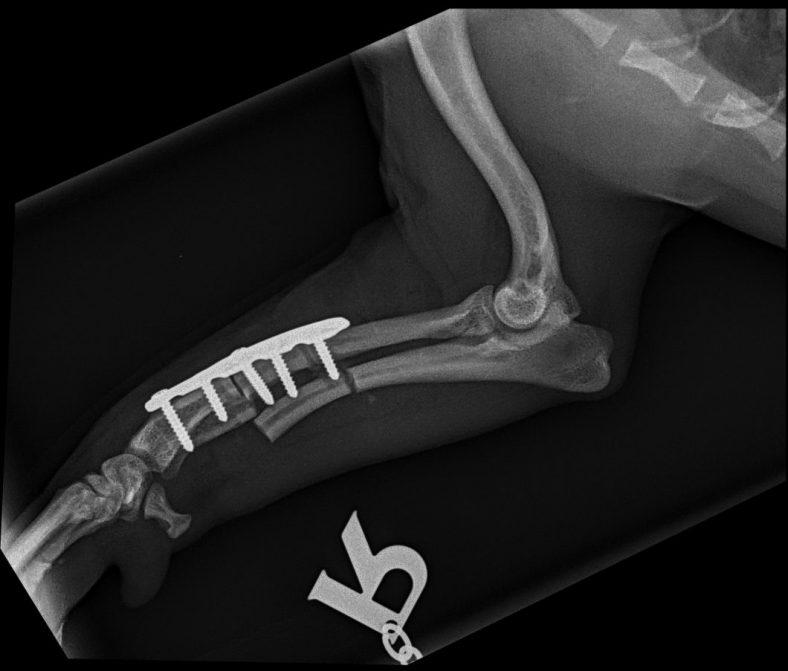Our Community
Dexter’s story – a 3D reconstruction

Dexter before his CT scan.
Dexter is an adorable 1-year-old Shih Tzu who came to The Ralph for further investigation into his forelimb deformity. Due to his small size, Dexter’s story involves using special custom-made 3D models and guides for his reconstructive surgery. Here we take a closer look at Dexter’s condition and the surgery…
Dexter visited our Orthopaedic Surgeon, Alan Danielski, for an assessment of his front legs. His carers had noticed Dexter’s right leg was a little stiff at times and they were also concerned that his feet appeared to point out more than usual. Dexter could walk quite comfortably on both forelimbs, although his feet were noticeably turned out when doing so.
An orthopaedic examination revealed discomfort when Alan was manipulating his right elbow, but the left elbow appeared fine. Both medial collateral ligaments (the ligaments on the inner side of the wrist joint) appeared mildly stretched due to the deformity but fortunately, the wrists did not appear to be collapsing forward when Dexter was standing still. This suggested that the deformity was not at its most severe stage.
In a case like Dexter’s, elbow pain is considered one of the main indications to perform corrective surgery. This type of surgery will prevent cartilage damage and the subsequent development of arthritis.
Given Dexter’s size (only 3.5Kg!), accurate planning was deemed of paramount importance. A CT scan of Dexter’s right forelimb was performed a week later and this was used to construct a 3D model. This plastic bone model was accompanied by two surgical guide systems which allow the surgeon to achieve perfect accuracy during surgery (the piece of bone that needed removing from Dexter’s leg was smaller than a 1p coin!).

3D models of Dexter’s forelimb before surgery (left) and after surgery (right).
The CT scan and the 3D model highlighted Dexter’s deformity was caused by a short ulnar bone (the bone at the back of the forearm) and this had caused twisting and bending of the radius (the bone at the front of the forearm). These deformities were the reason his paw pointed outwards.
Dexter returned for his surgery a few weeks later. Using the 3D surgical guides Alan performed a wedge ostectomy (a procedure which involves removing a wedge of bone, in Dexter’s case this was from the radius). The ulnar bone was also cut in two different points to allow movement of the radius and to avoid excessive pressure against the surrounding muscles. Removing this very small wedge of the bone allowed the elbow and wrist joints to realign, therefore straightening Dexter’s leg. To keep the radius in place during the healing phase, a small plate and screws were applied.

The surgical guides used during surgery.
The surgery went well, with Dexter making a quick recovery. Post-operative X-rays demonstrated satisfactory positioning of the plate and alignment between the elbow and carpal joints. A bandage was placed around Dexter’s leg to prevent swelling and provide additional support to the limb. Dexter was discharged to the comfort of his home, with some pain medication and strict instructions for bed-rest and a restricted lead-only exercise programme. Almost a month later and Dexter is doing very well. Additional X-rays will be taken within the next few weeks to assess how well the bone is healing and the positioning of the plate.

Post-operative X-ray showing the plate and screws, and where the bone was cut.
Angular Limb deformities like Dexter’s are not uncommon especially in little dogs such as Jack Russell Terriers, Pugs, Shih Tzus and Dachshunds. They are caused by a mismatch between the growth of the radius and ulna bones. For some dogs the deformity can occur after an injury, for others like Dexter, it is hereditary. The abnormal growth of the radius and ulna can cause shortened limbs, the paw to turn outwards, bowing of the radius and grinding between bones at the level of the elbow joint. These can then lead to pain and lameness. Surgery, like in Dexter’s case, is almost always the only way to correct the alignment of the limb and resolve the elbow pain.
Thank you for taking the time to read about Dexter’s story. Stay tuned for more news and stories from inside the hospital.
Take care,
Team Ralph
